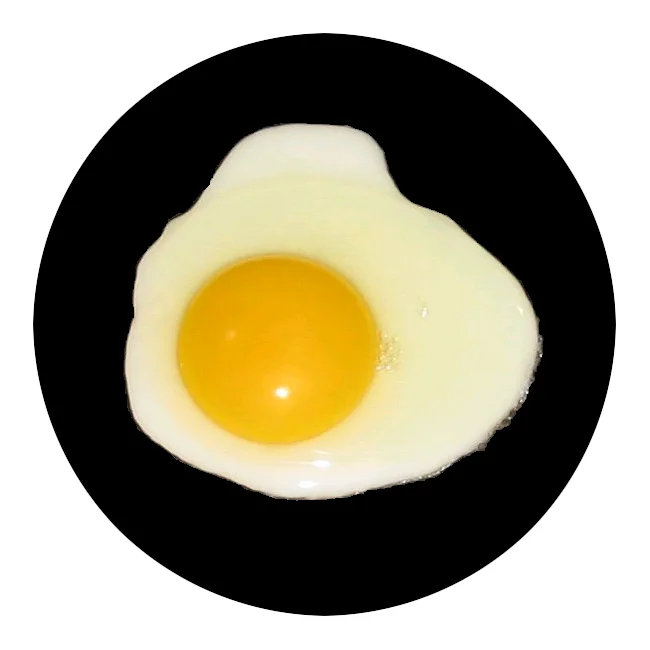Blog
Are Shoppers Seeing Your Core Page Elements?
Details on your page aren’t equally important. Some matter more than others.
Content Discovery is a process by which shoppers discover elements that matter.
Why would shoppers miss seeing core page elements? Because so many page elements scream for attention.

If a core element isn’t noticed, the shopper will have an incomplete picture and likely not buy.
How to Think About Content Discovery
Scenario: You are frustrated by the performance of your paid search landing page, so you embark on a journey to rebuild it from scratch.
After 3 weeks of backbreaking work, you have a really good-looking page. You’re excited to test it. Something feels just right.
But the test was a disappointment. The test page hurt sales.
The instinct is to scrap the page entirely, revert to the old page, and forget the entire episode.
But how do we know the experiment was a total bust?
We don’t because we are only looking at the final outcome.
What if we discovered that there was one page section that massively hurt conversions? This is confirmed by the fact that visitors who didn’t interact with this section converted at a high rate.
Fact is, we can’t evaluate the output without understanding the user behavior of our core page elements.
And to understand those core page elements, one needs to track them.
But don’t track everything. Not everything matters. The trick is to identify page elements that YOU BELIEVE are essential in getting someone from being interested —> to —> completing their order.
Tracking too many elements generates too much noise. My advice is to shortlist 3 core elements to track.
Let’s understand this using a non-client example. To see client examples, check out our case studies.
Content Discovery Example
Say you sell a chef’s knife and drive your paid traffic to this product page: https://misen.com/products/chefs-knife.
You may conclude that your core page elements are:
1: This knife-cutting gif that clearly shows the effectiveness of your product:
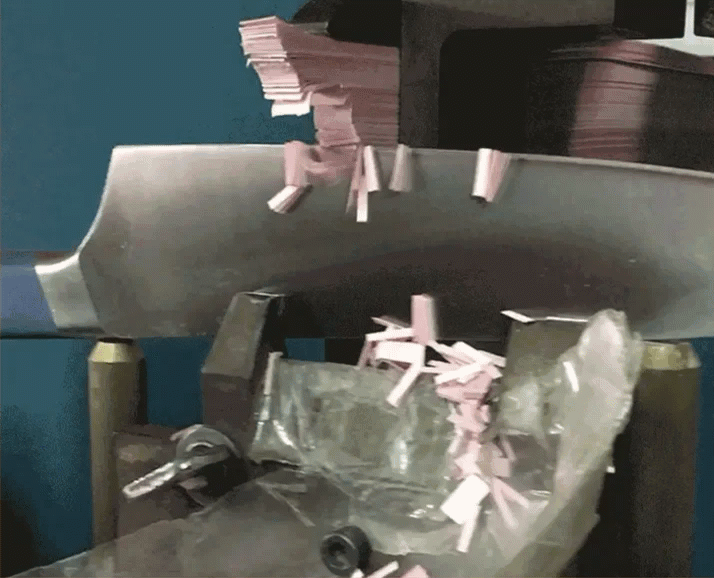
2: This 3 Reasons to NOT Buy content that does a great job of building a case:

3: And finally, you may conclude that engagement with these customer-submitted photos is critical in establishing social proof credibility.
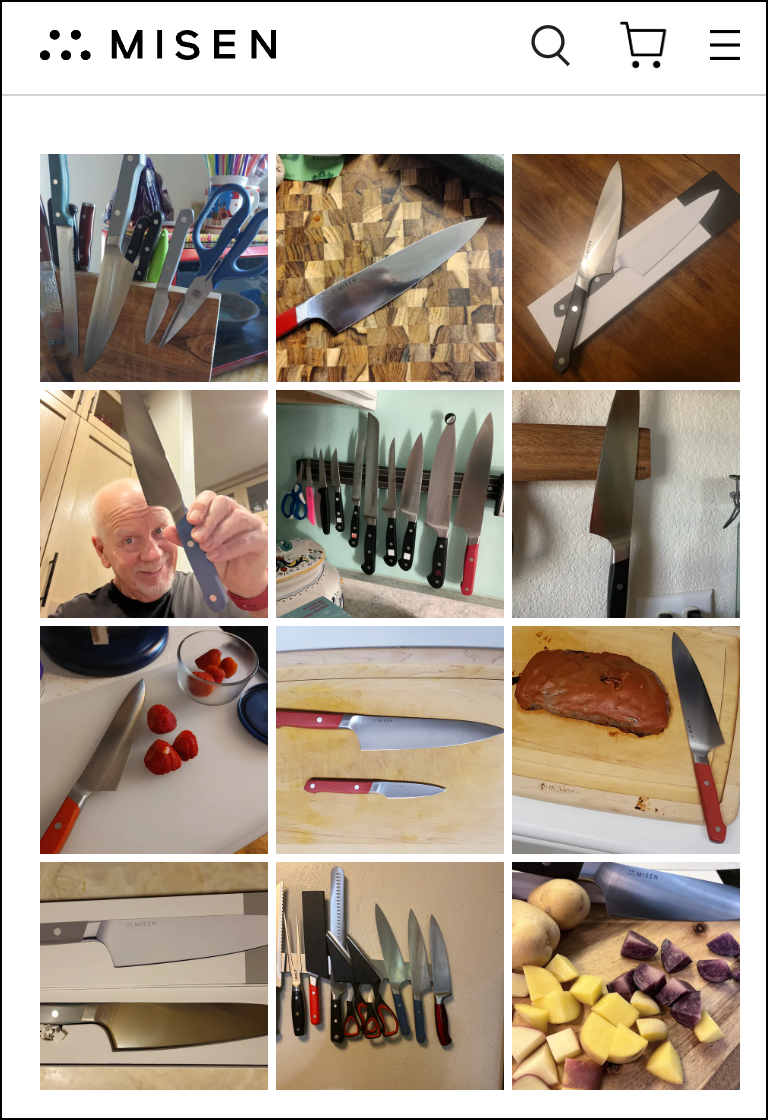
If someone visits this page, doesn’t interact with all three elements, and doesn’t buy, it might not be marketing’s fault. It could simply be that they missed the best parts of the pitch.
Armed with this insight, you could re-organize the page to make it easier for visitors to discover these critical page elements.
To make those sections stand out, you could give them a design treatment. Or you could create conditional logic so that if a critical page element is missed higher on the page, a nudge is shown lower on the page (to understand how this works, see our conditional elements article.)
My point is that once you recognize the issue, it’s easy to design a solution to fix it.
So, how do we add trackers to these 3 core elements in our example?
1: For the animated gif, you would need to use Google Tag Manager to fire an event when the shopper slows down when the gif becomes visible in their screen’s viewport:
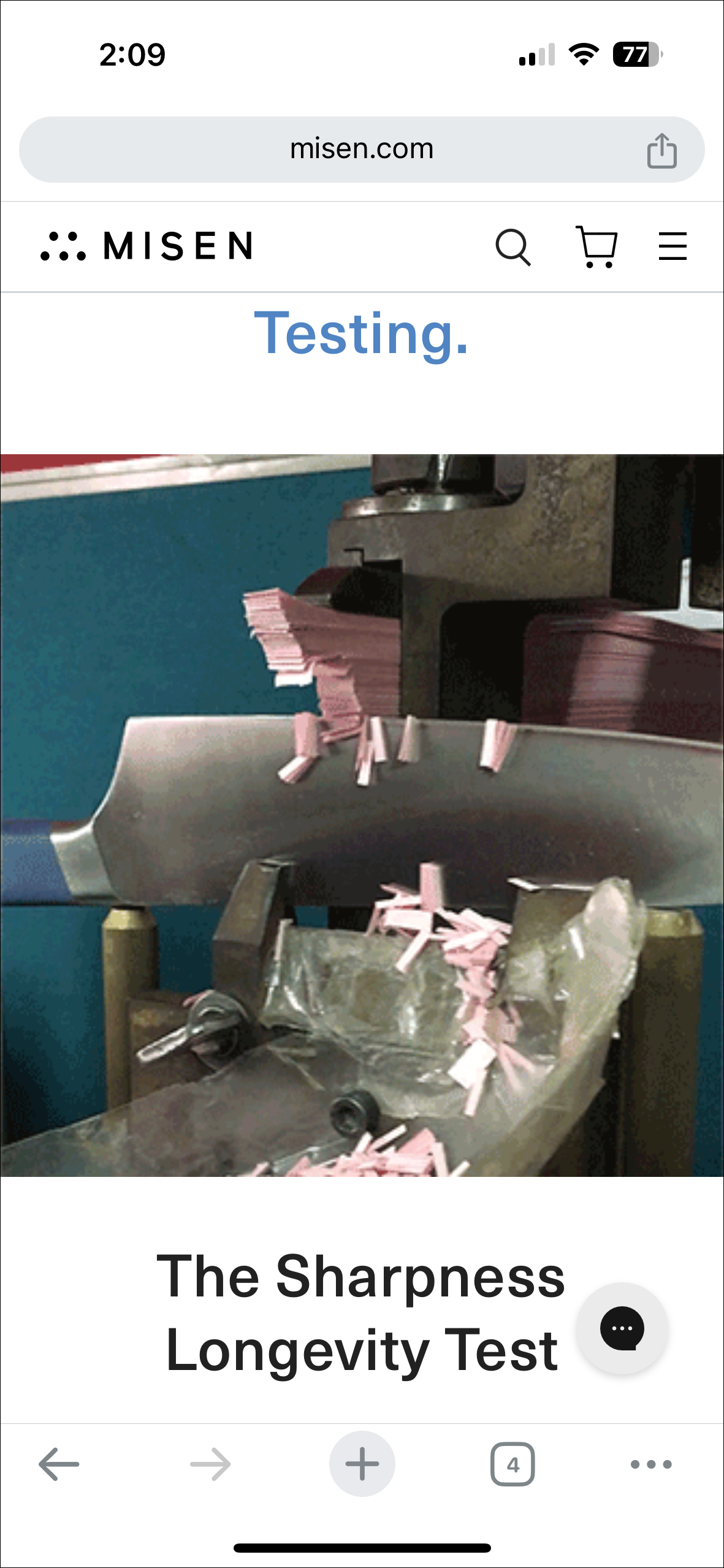
2: For the 3 Reasons to NOT Buy content, you could fire an event when the content expansion section is clicked:
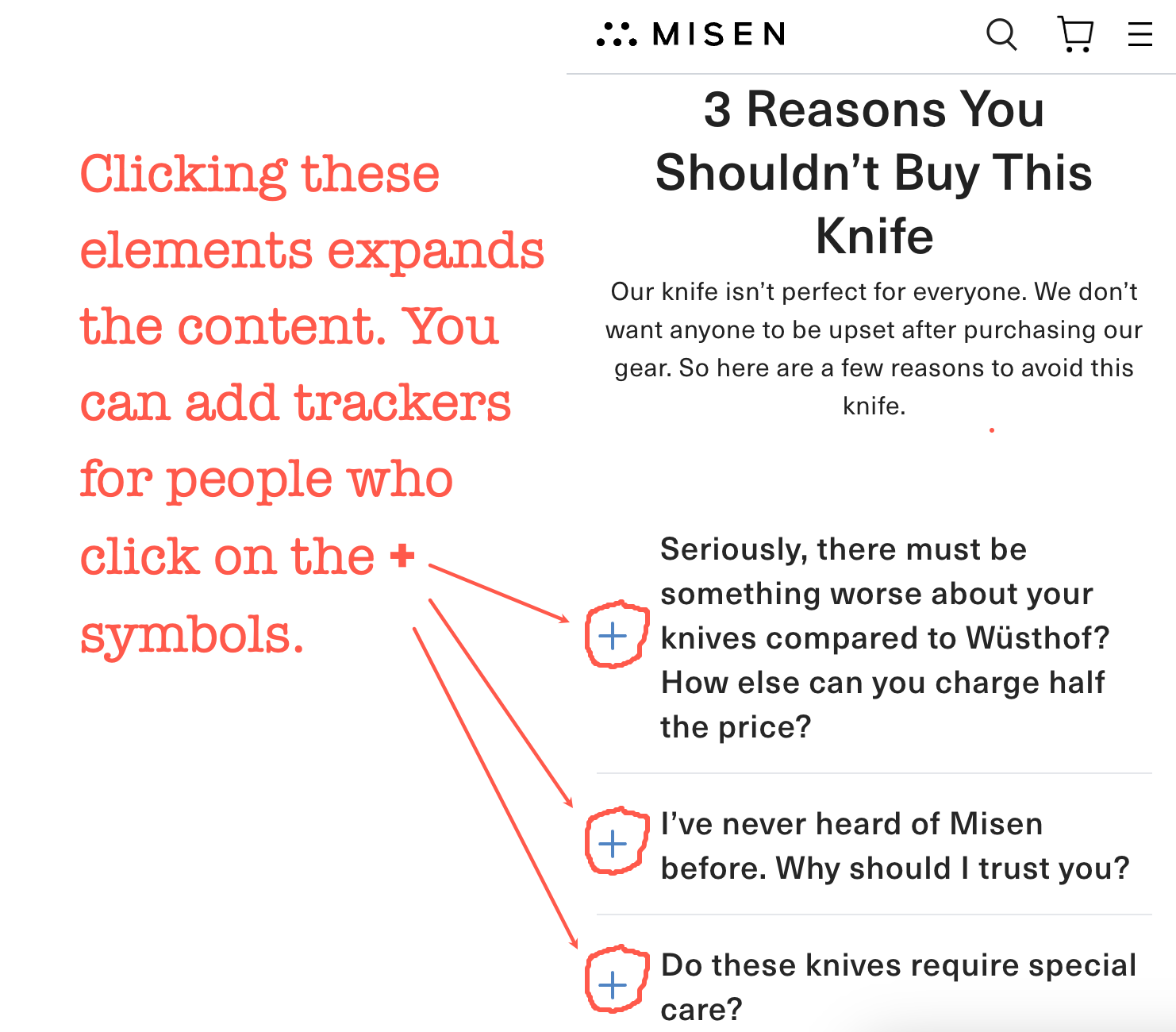
3: In the customer photo image gallery, you could add a tracker for people who clicked on an image, activated the image gallery lightbox, and scrolled through 3 images:
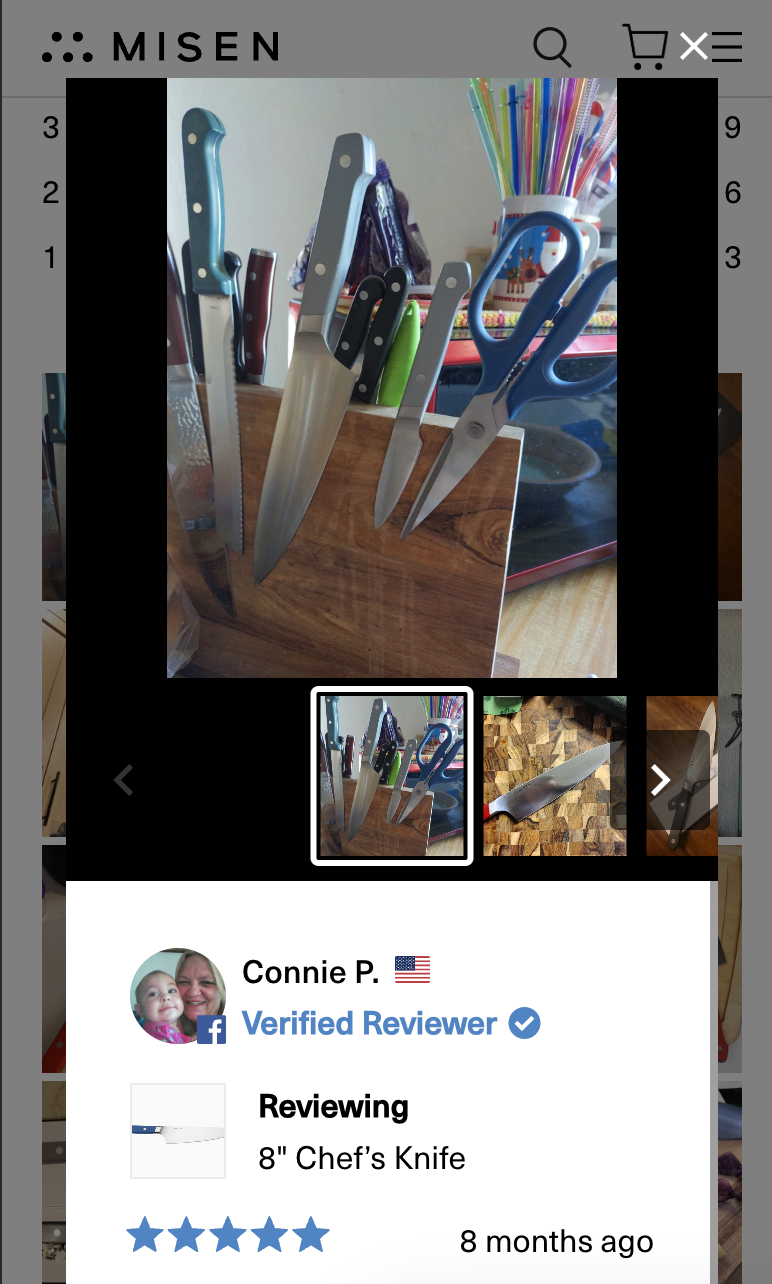
Now, when analyzing test data, you aren’t looking at overall revenue impact alone; you’re also reviewing engagement data of core elements.
If visitors don’t interact with them, then make tweaks to improve their discovery rate.
If content discovery is good but the revenue needle still isn’t moving, then you know the sales pitch needs fine-tuning.
Revealing It All
We hope you liked this content discovery article. 98% of people don’t find this article, and 90% of those don’t go this deep into the topic.
You have, and for that, you deserve our formula.
In our marketing lab 🥼, experimenting 🧪 for the last 15 years, we’ve discovered that one reason marketing campaigns fail is because they try to do too much.
Once they’ve consumed your pitch, prospects can be placed in 1 of 3 groups:
— Ready to buy
— Will never buy
— Interested, but need a little more convincing
The 3rd group has the biggest revenue potential.
Evidence Our Formula Works
This strategy mentioned above isn’t a theoretical framework. It’s the base formula for all our conversion work for clients. This marketing framework can be used to boost sales for sports products. To sell skincare products. Pet products. Consumer electronics. Athletic gear. Back pain solutions. Food items. High-end cooking tools.
Does the sales pitch always need to be shown as a popup? Nope.
It can also convert cold Facebook ad traffic, improve mobile conversion rates, generate calls, optimize your most important landing page, etc.
It can even be used to improve your overall conversion rates.
Converting Interested, but Need a Little More Convincing Group (With Examples)
Building a sales pitch that converts visitors who are interested, but need a little more convincing is explained in this nine truths article.

